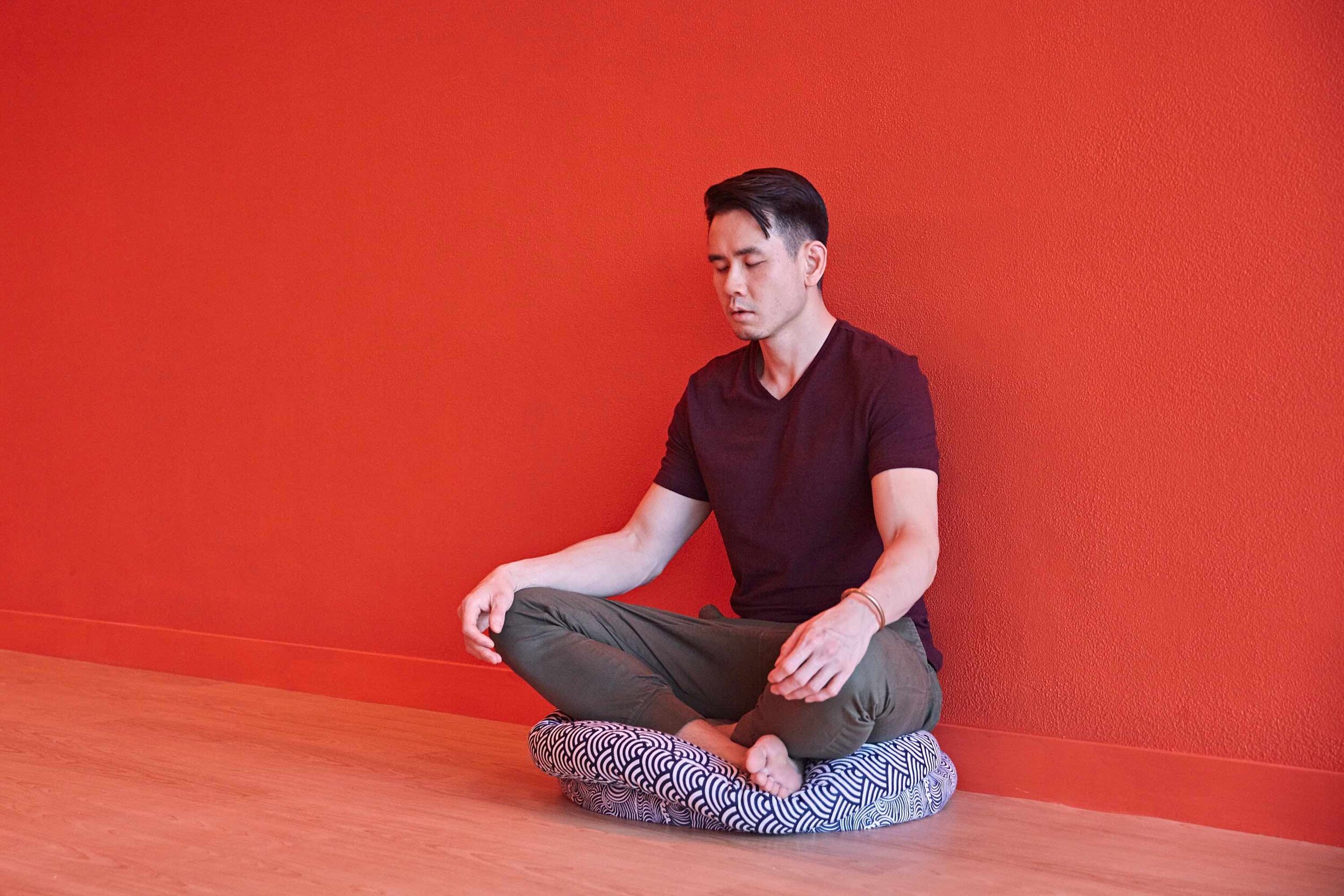4 Easy Daily Techniques
To Enhance Your Immune System
1.
Sitting Half Spinal Twist
(Ardha Matsyendrasana)
Yoga poses that gently (*gently being the key word here!*) compress, twist or nourish the spine also stimulate the stomach. This helps strengthen our immunity and break down toxins that have the potential to create infection or inflammation due to poor digestion.
What To Do:
Sitting with your legs straight out in front of you, plant your right foot on the outside of your left leg, close to knee area so the sole of your right foot is on the floor
Keep the extended left foot flexed.
Plant your right palm directly behind your low back and bring your left elbow to the outside of your right knee
Inhale to lift and lengthen your spine, exhale to twist and relax the body.
2.
Listen To Sounds
Sound and music can easily alter your mood and affect your subconscious mind. Everything you listen to becomes a part of yourself. Therefore it is very important to surround yourself with sounds that make you happy.
What To Do:
Replace your harsh morning alarm sounds with something more gentle and musical.
Listen to playlists that include sounds of nature - birds, water, waves etc.
When you are in a situation where there are intense sounds such as cars honking, construction work, rush-hour chatter etc. Instead of getting frustrated at these sounds, pause for a minute and focus on listening to the patterns the sounds make - just as you would if you were listening to music.
3.
Breathing Exercises
There are numerous breathing techniques that have been used for thousands of years. More recently, breathing has become a focus of scientific research and studies. Proper breathing acts as the medium for individuals to take their health into their own hands. It improves physical health and fitness performance, manages pain, alleviate and prevents diseases and influences immunity.
What To Do:
Nasal breathing - Air that we inhale through the nose passes through the nasal mucosa, which stimulates the reflex nerves that control breathing. Mouth breathing bypasses the nasal mucosa and makes regular breathing difficult, which can lead to snoring, breath irregularities and sleep apnea.
Breath in to your diaphragm - this t is done by contracting the diaphragm, a muscle located horizontally between the thoracic cavity and abdominal cavity. Air enters the lungs, the chest does not rise and the belly expands. It is the basis for almost all meditation or relaxation techniques which can lower your stress levels, reduce your blood pressure, and regulate other important bodily processes.
4.
Concentration As A Gateway To Meditation
An uncollected, scattered mind is the opposite of a meditative mind. Training the ability to focus your attention in one direction for an extended period of time, not only strengthens your willpower, it is also one of the methods used to quieten the mind. A quiet mind then has the potential to become a peaceful and clear mind.
What To Do:
Focus your 100% of your attention on your breath. Do not change it or force it to be a certain way. Let it breathe as it must during the moment you are currently in. Keep witnessing it. If your mind gets distracted and starts thinking about other things let it happen but keep your willpower focused on watching your breath as it is. Eventually the chatter in your mind will subside and you will be come sensitive to all the subtle details involving your breath.
Keep your gaze still. This can be done with the eyes open or closed. Try to keep the eyes from flickering or wandering in multiple directions. Find a focal point with your gaze and stay there. Breathe naturally while doing this.
Bring your awareness to different areas of your body parts and physically relax them using your mind. Start from the soles of your feet and end at the crown of your head.













